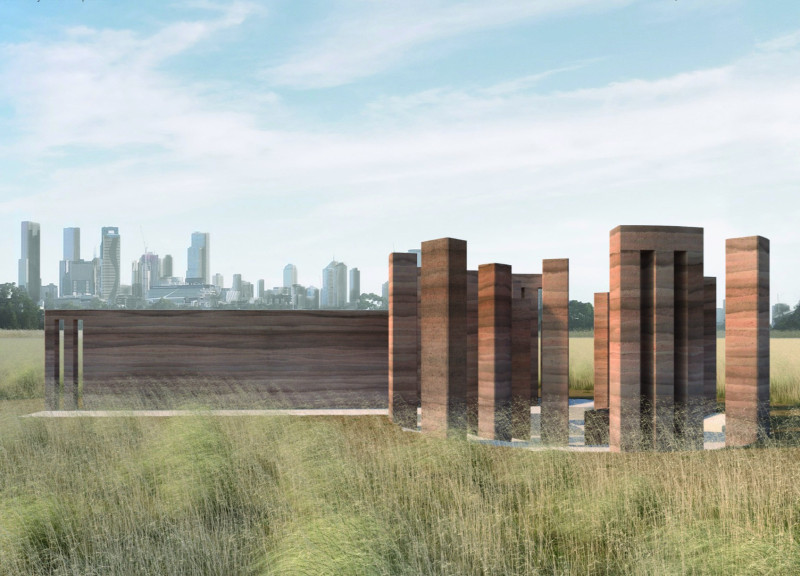5 key facts about this project
The Pavilion of Layered Reflections is located in Royal Park, Melbourne, Australia. It serves as an exhibition space designed to explore the attributes of rammed earth within an urban setting. The pavilion integrates into the local landscape, surrounded by native grassland, highlighting the relationship between built structures and their natural environment. Its design emphasizes how traditional materials can function sustainably in modern architecture.
Material Exploration
The pavilion features a collection of columns that vary in height, width, and aggregate composition. This variation showcases the characteristics of rammed earth, allowing it to weather and age naturally over time. The design does not use protective finishes, which is a key aspect of its concept. Rammed earth is known for its impressive lifespan, often exceeding one thousand years, with minimal degradation expected after fifty years. This approach presents rammed earth as a viable option for sustainable building in contemporary practices.
Spatial Organization
The layout of the pavilion follows a circular design, which organizes the columns in a radial arrangement. This creates an inviting space for visitors. A linear pathway serves as the entrance, providing a clear approach while contrasting with the circular shape. This thoughtful organization encourages interaction between the space and its occupants, enhancing the overall experience of being within the pavilion.
Light and Reflection
Natural light is a critical element in the pavilion's design. The arrangement of the columns allows light to filter through, changing the atmosphere throughout the day. Each column is positioned in a way that highlights the distinct textures and colors of the rammed earth. The varying play of light and shadow enriches the environment inside the pavilion, bringing attention to its material qualities.
Landscape Integration
The pavilion is partially sunken into the surrounding ground, facilitating water collection during heavy rain. This design choice creates a reflective pond that enhances the visual connection between the columns and their natural surroundings. The water adds another layer to the theme of layered reflections, inviting visitors to consider the relationship between the structure and the landscape while promoting a deeper appreciation of the design.



















































